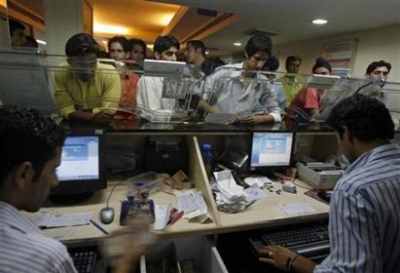 The idea of the payment banks is to provide access to banking for people, especially in rural areas, says Madan Sabnavis.
The idea of the payment banks is to provide access to banking for people, especially in rural areas, says Madan Sabnavis.
With post office deposits and Jan Dhan already in place, is there really place for yet another institution for banking inclusion?
The introduction of the concept of payments banks is an interesting proposition, but given that we already have similar systems, should we be duplicating them?
The idea of the payment banks is to provide access to banking for people, especially in rural areas.
The bank's operations are rudimentary: funds will be invested exclusively in government securities or treasury bills with maturity of less than a year, eschewing issues such as non-performing assets and capital adequacy.
However, two competing entities already perform similar functions on a fairly large scale. First, India Post has around 1,40,000 post offices in rural areas, which have outstanding deposits of around Rs 3,70,000 crore (as on March 2013) with an annual flow of Rs 1,70,000 crore.
This excludes certificates and Public Provident Fund accounts. Therefore, we do have strong structures in place that collect deposits from the public in the regular course of activity.
The business models are also almost the same. The money collected is devolved to the state and Central governments based on a formula and, since post offices are not commercial entities, they do not lend the money.
The funds go towards balancing the budget, which is analogous to government securities and treasury bills.
The second area of competition for payment banks comes from the Jan Dhan scheme.
This project is being executed within the existing structure of commercial banking where the public sector banks are to take the lead and open 75 million no-frills accounts by the year end.
These accounts have two advantages - they have an embedded insurance product and, at a future date, could be entitled to an overdraft.
The Jan Dhan directly supersedes the payments bank objective because it has managed to include 55 million households (according to market reports) in an aggressive manner.
Therefore, payment banks may not have many takers since they will be competing with post offices and the commercial banks' Jan Dhan, which goes beyond what the payments bank offers.
Prima facie, the payment bank model looks attractive - cost of deposits at four per cent, intermediation costs at 1.75 per cent and returns of seven to eight per cent, giving a net yield of 1.25 to 2.25 per cent. But there are nagging problems as revealed by the Jan Dhan experience.
The cost of opening an account is Rs 250, which includes a debit card. But 80 to 90 per cent of such accounts stay dormant forever.
The numbers available from media reports on Jan Dhan indicate that for the 55 million accounts opened, the total amount mobilised was Rs 4,000 crore, which translates to roughly Rs 725 per account.
The cost incurred by banks would have been Rs 1,375 crore, thus eroding a part of the deposits mobilised, hardly good economics for the payments banks.
There are other, practical issues. For instance, payment banks will entail building brick-and-mortar branches.
There is a lot of talk about leveraging technology but given that most villages have limited access to power supply and knowledge of internet, physical access will be required. New ATMs have to be installed, since only 15 per cent of them are in rural areas right now.
It is generally believed that if financial inclusion is to be achieved we need an aggressive approach. In that sense, having multiple schemes to achieve the objective can really do little harm, so hence payments banks can coexist with post office savings bank and Jan Dhan.
But it will be worthwhile to do an efficiency audit of the existing structures and put in place performance parameters for the new banks, so that we do not end up with a model that ends up eroding value.
Finally, we do have a proclivity for creating new institutions - the Mahila Bank is an example.
This bank was set up with fanfare, even though the same objective could have been achieved by designating public sector branches exclusively for women.
We have not heard much about this bank since. Is it possible that the payments banks could also reach this state?
The writer is Chief Economist, CARE Ratings.











 © 2025
© 2025